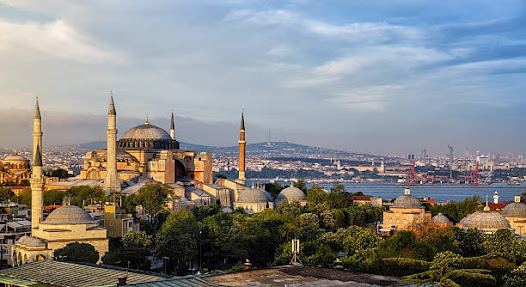Hagia Sophia Interior
The Hagia Sophia, an iconic architectural wonder located in Istanbul, Turkey, stands as a timeless testament to the brilliance of human creativity and engineering prowess. Its interior, a harmonious blend of art and architecture, has mesmerized visitors for centuries. As one of the most important and influential structures in history, the Hagia Sophia continues to captivate the world with its magnificence and historical significance.
Historical Background
The Hagia Sophia, originally known as the Church of Hagia Sophia, was commissioned by Emperor Justinian I of the Byzantine Empire in the 6th century. Designed by Anthemius of Tralles and Isidore of Miletus, two gifted architects, the construction began in 532 CE and was completed in just five years—an impressive feat given the limited resources and engineering tools of that era.
For nearly a thousand years, the Hagia Sophia served as the principal cathedral of the Byzantine Empire, witnessing numerous religious ceremonies, imperial coronations, and important events in the history of Eastern Christianity. However, in 1453, the city of Constantinople fell to the Ottomans, and the Hagia Sophia was converted into a mosque, undergoing various modifications to accommodate Islamic traditions while preserving its original splendor.
In 1935, under the orders of Turkey's first President, Mustafa Kemal Atatürk, the Hagia Sophia was transformed into a museum, symbolizing the secularization of Turkey and recognizing the significance of its historical and architectural value. However, in 2020, it was reverted to a mosque, sparking debates about its cultural and religious identity.
Architectural Marvels
The Hagia Sophia's interior is a masterpiece of architectural and engineering brilliance, fusing elements of Byzantine and Ottoman styles. The sheer size and scale of the structure are awe-inspiring, measuring 82 meters in length and 73 meters in width, with a stunning central dome that soars to a height of 55.6 meters, making it one of the largest enclosed spaces of its kind in the world.
The focal point of the interior is the central dome, a breathtaking architectural marvel that appears to float effortlessly above the vast expanse of the building. The dome's construction is an engineering marvel for its time, utilizing a combination of pendentives and semi-domes to distribute the weight effectively, allowing it to seemingly hover over the space without the need for additional support. The use of large windows around the base of the dome not only fills the interior with natural light but also gives the illusion of the dome floating, an effect that continues to amaze visitors.
Christian Mosaics and Iconography
The Hagia Sophia interior is adorned with an extensive array of Christian mosaics and religious iconography that provides insight into the religious and cultural history of the Byzantine Empire. Many of these mosaics date back to the 9th century, showcasing the remarkable artistic achievements of that period.
One of the most significant mosaics is the Virgin and Child located in the apse, behind the main altar. This mosaic, which dates back to the 9th century, depicts the Virgin Mary holding the infant Jesus, symbolizing the divine connection between heaven and earth. Other mosaics portray important religious figures and scenes, such as the Deesis mosaic, featuring Christ flanked by the Virgin Mary and John the Baptist.
These mosaics, characterized by their vibrant colors and intricate detailing, provide a visual narrative of religious stories and serve as a valuable historical record of Byzantine religious beliefs and practices.
Islamic Elements and Calligraphy
Following the Ottoman conquest, the Hagia Sophia underwent renovations to reflect its new role as a mosque. Islamic elements were incorporated into the interior, blending harmoniously with the existing Byzantine features.
One of the most prominent additions was the mihrab, a semicircular niche indicating the direction of Mecca, essential for Muslim prayer. The mihrab is a stunning example of Islamic decorative art, featuring intricate calligraphy and geometric patterns.
The magnificent minbar, or pulpit, was also installed, from which the Imam delivers sermons. The minbar is an exquisite piece of Ottoman craftsmanship, often adorned with delicate wood carvings and ornate designs.
Innovative Architecture and Acoustic Wonders
The architects of Hagia Sophia employed innovative techniques to achieve both structural stability and remarkable acoustics. The domed shape, in combination with the use of various reflective surfaces, contributes to its exceptional acoustic properties. A whisper made in one corner can be heard clearly on the opposite side, a feature that has fascinated visitors for centuries.






Comments
Post a Comment